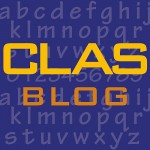
A recent talk at UConn by a Nobel Prize-winning physicist spurs the dean of CLAS to contemplate how adding an extra dimension to a problem can lead to new discoveries.
By Jeremy Teitelbaum, Dean
College of Liberal Arts and Sciences
On Sept. 24, the Physics Department hosted David Gross, director of the Kavli Institute for Theoretical Physics and winner of the 2004 Nobel Prize in Physics, for its annual Katzenstein Lecture.
Professor Gross received the Nobel with H. David Politzer and Frank Wilczek for a mathematical approach to explaining how quarks – one of two fundamental classes of elementary particles in the current “standard model” of particle physics – are bound together into more familiar nuclear particles like protons and neutrons.
Here at UConn, Professor Gross looked beyond past achievements, and, in a wide-ranging lecture, talked about what he and other physicists might hope to learn from the Large Hadron Collider (LHC) just coming on-line in Switzerland. (One LHC experiment will test a theory of the structure of the proton proposed by UConn scientists Munir Islam and Richard Luddy, as explained in a UConn Today article in the spring.)
 A baseline expectation for the LHC is to identify a particle known as the “Higgs Boson.” The Higgs Boson is a new type of particle that, although theorized by physicists to give mass to all matter in the universe, has not yet been observed. My sense of the search for the Higgs is that it would fill in a missing box in the highly elaborated theory – the standard model – that accounts for the interactions between matter and light at small distances.
A baseline expectation for the LHC is to identify a particle known as the “Higgs Boson.” The Higgs Boson is a new type of particle that, although theorized by physicists to give mass to all matter in the universe, has not yet been observed. My sense of the search for the Higgs is that it would fill in a missing box in the highly elaborated theory – the standard model – that accounts for the interactions between matter and light at small distances.
What really excited Professor Gross, however, was the idea that the LHC might reveal something truly new, and in particular whether it might provide some physical evidence for a family of theories called, collectively, “string theory.” String theory offers the opportunity to unify the understanding of matter provided by the standard model with Einstein’s General Relativity – in other words, to explain how gravity fits into quantum mechanics.
There have been a number of popular books and TV shows written about string theory, which has both supporters and skeptics in the physics community. Although it is controversial as a physical theory, string theory has been highly influential in pure mathematics, where people simply don’t care about experimental evidence. Indeed, Edward Witten, a student of Gross’s and nominally a theoretical physicist, received a Fields Medal – the highest international honor in the field of mathematics – for his contributions to mathematics derived from research into string theory.
What I took away from Professor Gross’s talk was his emphasis on the related notions of unification and symmetry. In essence, the discovery of hidden symmetries in nature reveal that phenomena thought to be unrelated are seen instead to be different points of view on a single underlying truth.

Turning this over in my own mind, I thought of Edward Abbott’s famous satirical novel “Flatland,” which uses geometry to skewer Victorian mores. Flatland tells the story of a rather stodgy individual named “A Square” who lives in a two-dimensional world. The other inhabitants of Flatland are polygons (triangles, pentagons, and so forth).
Let’s imagine for a moment that physicists at work in Flatland discover that every individual in the world – every polygon – actually carries an additional piece of information. They are “oriented,” meaning that each individual actually has a little arrow on his boundary pointing either clockwise or counterclockwise around it. Flatland scientists can distinguish clockwise individuals from counterclockwise ones, perhaps because of very tiny attractive and repulsive forces between like and unlike orientations.

No matter how the inhabitants of Flatland move around, they cannot change from a clockwise to a counterclockwise orientation. Unscrupulous scientists have even divided individuals in half by cutting through them, only to learn that the two pieces retain the orientation of the original individual.
When “A Square” has his great insight that there is, in fact, a third dimension, a Flatland physicist makes a startling discovery. By applying tremendous energy to a Flatland inhabitant, he can cause that individual to undergo a reflection through the third dimension and, in the process, reverse his orientation!
This example may seem trivial, but it shows how adding dimensions to a problem may reveal hidden symmetries.
As for the spectacular, but esoteric, predictions of string theory – the jury is out. The LHC is just starting its operations and physicists will need years of analysis just to understand the output.
My personal fantasy – for which there is absolutely no justification or hope – is that the key to faster than light travel will turn up somewhere and we can finally get some serious starships built.
Comments? Send them to: dean@clas.uconn.edu
The College of Liberal Arts and Sciences has 23 departments in the sciences, humanities, and social sciences, ranging from physics to philosophy, and more than 15,000 students, 600 faculty, and 83,000 alumni. Check out our three initiatives: Health and Human Behavior, the Environment, and Culture and Society.
Other CLAS Blog posts:
A Step Closer to Science Fiction?
Academic Freedom Meets Freedom of Information
Ambition and Intrigue in the Court of Henry VIII
A Civil Conversation on Contentious Issues
Meditations on A(nother) Snow Day
Coming to Grips with Climate Change
Ideas — The Psychological Currency of the University
Will ‘Crowdsourcing’ Revolutionize Scholarship? Spectacular Storrs
Citizenship, Marriage, and Mosques: Problems in the Applied Humanities
Of Deans and English Professors
UConn Over Yale and Other Tales from Jim Draper ’41


